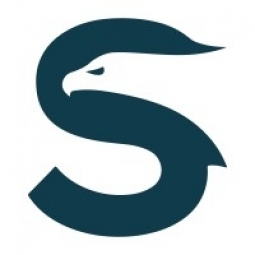Customer Company Size
Mid-size Company
Region
- America
Country
- United States
Product
- Retrospec bikes
- Retrospec e-bikes
- Retrospec longboards
- Retrospec paddleboards
- Retrospec snowboarding equipment
Tech Stack
- ShipHawk
- NetSuite
Implementation Scale
- Enterprise-wide Deployment
Impact Metrics
- Productivity Improvements
- Cost Savings
Technology Category
- Platform as a Service (PaaS) - Connectivity Platforms
Applicable Industries
- Retail
- Consumer Goods
Applicable Functions
- Logistics & Transportation
- Warehouse & Inventory Management
Use Cases
- Supply Chain Visibility
- Inventory Management
Services
- System Integration
About The Customer
Retrospec is a company that aims to make everyone feel at home in the open air. Since selling its first bike in 2009, Retrospec has helped millions experience what the outdoors has to offer with expertly designed, durably crafted, accessibly priced gear. Their product range includes bikes, e-bikes, longboards, paddleboards, snowboarding equipment and more that inspire adventure and enable exploration. The company serves a network of almost 500 dealers as well as Amazon customers. During the COVID-19 pandemic, the company experienced a surge in demand for bikes due to lockdowns, new work-from-home situations, and virtual school.
The Challenge
During the early days of COVID-19, with lockdowns, new work-from-home situations, and virtual school, demand for bikes had never been higher. For Retrospec, that meant orders increased rapidly, and its former pack and ship process just wasn’t going to cut it. Serving its network of almost 500 dealers as well as Amazon customers, Retrospec needed a streamlined and automated way to keep up with orders. The previous pack and ship process required multiple clicks and scans to process just one shipment, which translated into a lot of time and human resources to fulfill orders. Retrospec also wanted to be able to rely on an automated system to rate shop for shipping rather than a manual, people-intensive process. Most of their orders weren’t complex, in fact, 90% ship in their own containers, are pre-packed, and Retrospec already had the dimensions needed to rate shop, but when the orders would get to the pack table, they slowed down the entire process.
The Solution
Since implementing ShipHawk, the Retrospec team has gained efficiencies throughout the pack and ship process. Today, Retrospec utilizes ShipHawk to automatically rate shop well before the order is picked so by the time it gets to the packing table, there’s no waiting around. Each order is shipped with the best carrier and shipping level to meet customer requirements without any human decision-making. Retrospec was able to streamline the warehouse by removing the roadblocks impacting packing and shipping. Order processing time was positively impacted by a shipping and fulfillment solution that processes orders through its own platform and then automatically pushes completed shipment data into NetSuite - allowing orders to be processed drastically faster than in native NetSuite while maintaining real-time visibility.
Operational Impact
Quantitative Benefit

Case Study missing?
Start adding your own!
Register with your work email and create a new case study profile for your business.
Related Case Studies.
.png)
Case Study
Improving Vending Machine Profitability with the Internet of Things (IoT)
The vending industry is undergoing a sea change, taking advantage of new technologies to go beyond just delivering snacks to creating a new retail location. Intelligent vending machines can be found in many public locations as well as company facilities, selling different types of goods and services, including even computer accessories, gold bars, tickets, and office supplies. With increasing sophistication, they may also provide time- and location-based data pertaining to sales, inventory, and customer preferences. But at the end of the day, vending machine operators know greater profitability is driven by higher sales and lower operating costs.

Case Study
Improving Production Line Efficiency with Ethernet Micro RTU Controller
Moxa was asked to provide a connectivity solution for one of the world's leading cosmetics companies. This multinational corporation, with retail presence in 130 countries, 23 global braches, and over 66,000 employees, sought to improve the efficiency of their production process by migrating from manual monitoring to an automatic productivity monitoring system. The production line was being monitored by ABB Real-TPI, a factory information system that offers data collection and analysis to improve plant efficiency. Due to software limitations, the customer needed an OPC server and a corresponding I/O solution to collect data from additional sensor devices for the Real-TPI system. The goal is to enable the factory information system to more thoroughly collect data from every corner of the production line. This will improve its ability to measure Overall Equipment Effectiveness (OEE) and translate into increased production efficiencies. System Requirements • Instant status updates while still consuming minimal bandwidth to relieve strain on limited factory networks • Interoperable with ABB Real-TPI • Small form factor appropriate for deployment where space is scarce • Remote software management and configuration to simplify operations

Case Study
Digital Retail Security Solutions
Sennco wanted to help its retail customers increase sales and profits by developing an innovative alarm system as opposed to conventional connected alarms that are permanently tethered to display products. These traditional security systems were cumbersome and intrusive to the customer shopping experience. Additionally, they provided no useful data or analytics.

Case Study
How Sirqul’s IoT Platform is Crafting Carrefour’s New In-Store Experiences
Carrefour Taiwan’s goal is to be completely digital by end of 2018. Out-dated manual methods for analysis and assumptions limited Carrefour’s ability to change the customer experience and were void of real-time decision-making capabilities. Rather than relying solely on sales data, assumptions, and disparate systems, Carrefour Taiwan’s CEO led an initiative to find a connected IoT solution that could give the team the ability to make real-time changes and more informed decisions. Prior to implementing, Carrefour struggled to address their conversion rates and did not have the proper insights into the customer decision-making process nor how to make an immediate impact without losing customer confidence.









